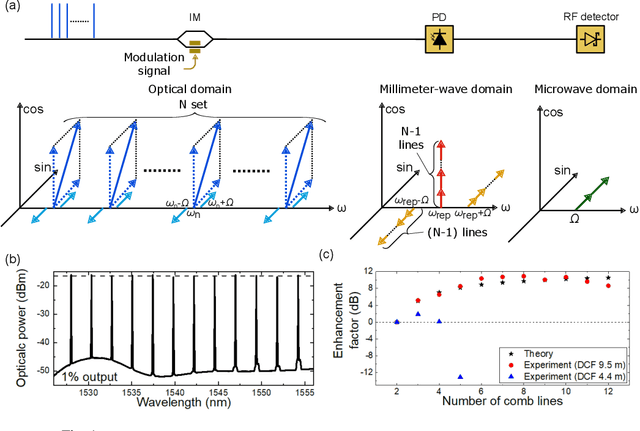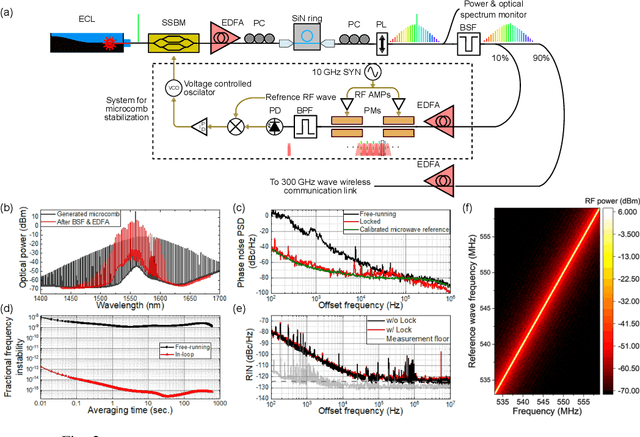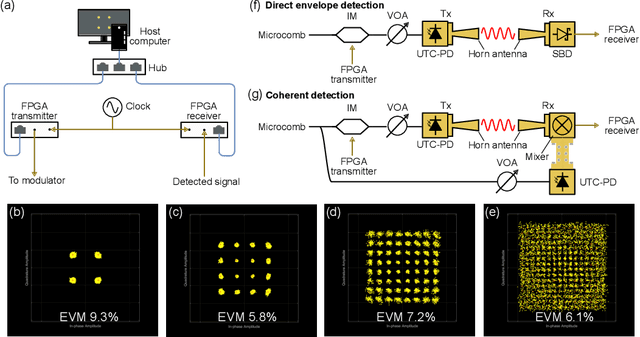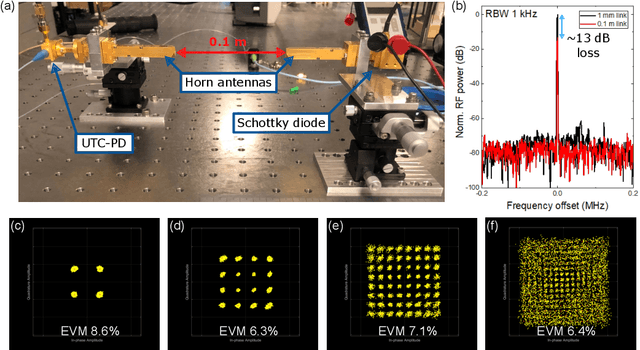300 GHz wireless link based on an integrated Kerr soliton comb
Paper and Code
Oct 28, 2022



A Kerr microresonator frequency comb has enabled the generation of low-phase-noise millimeter- and terahertz-waves in conjunction with an ultrafast photodiode. It is intriguing to employ the new light source in wireless communication at above 100 GHz band, where a carrier signal with a high signal-to-noise ratio is desired to achieve higher data rates. In this study, we demonstrate two simple and efficient architectures of wireless links based on a microresonator comb. We show experimentally that simultaneous modulation and detection of multiple comb lines result in >10 times stronger modulation signal strength than two-line detection at a receiver. Successful transmission of complex modulation format up to 64 quadrature amplitude modulation proves that a microresonator comb and the proposed modulation method are effective in modern wireless communication.
 Add to Chrome
Add to Chrome Add to Firefox
Add to Firefox Add to Edge
Add to Edge